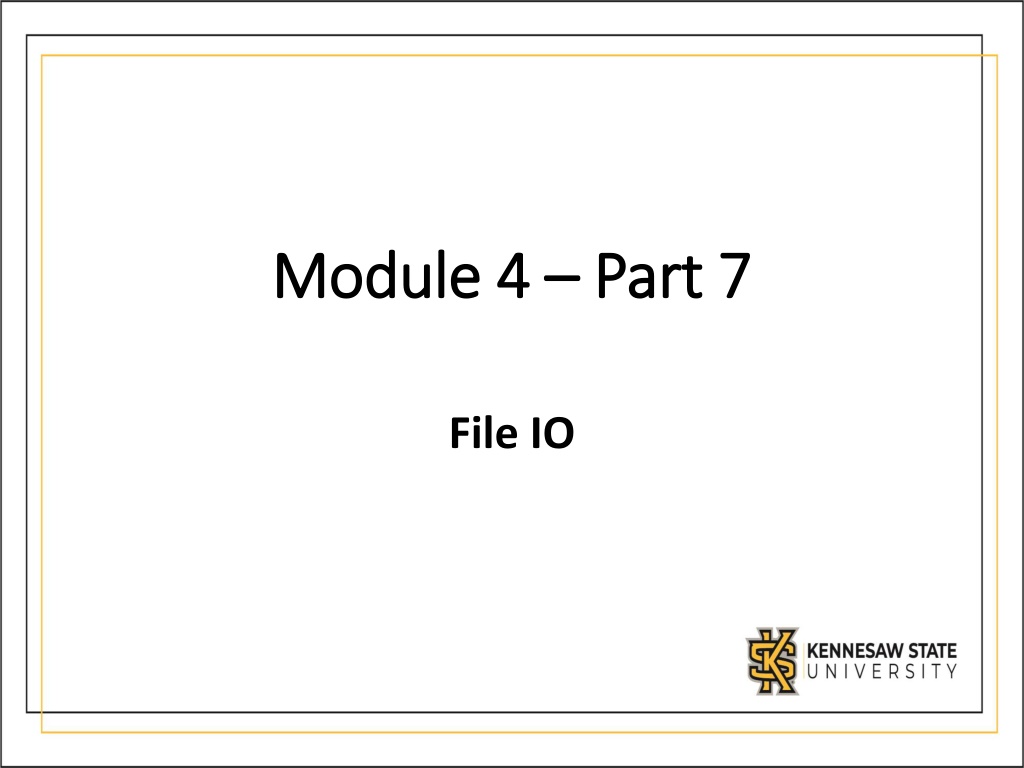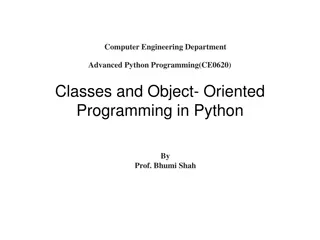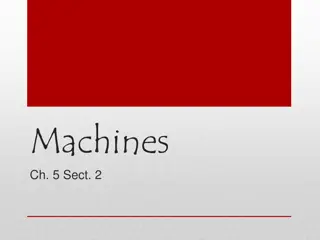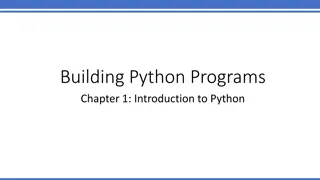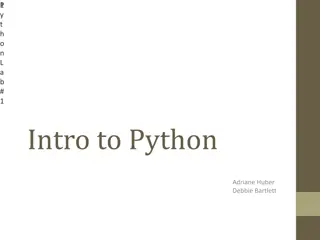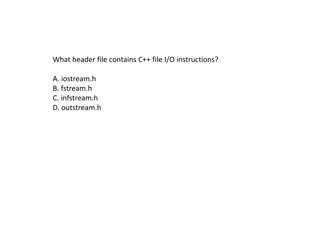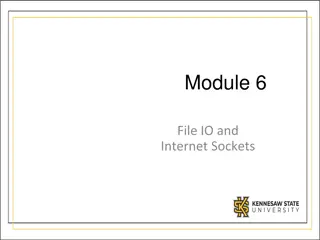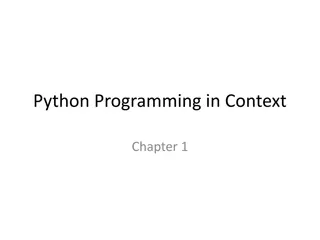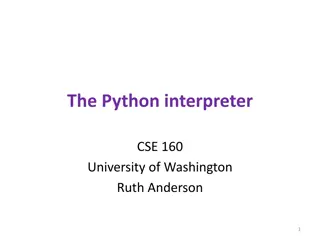File Input/Output in Python Programming
Exploring the basics of File I/O (Input/Output) in Python, including reading from and writing to text files. Learn how to read all content from a file as a string or a list, and how to write data to a file using Python's file handling capabilities.
Download Presentation

Please find below an Image/Link to download the presentation.
The content on the website is provided AS IS for your information and personal use only. It may not be sold, licensed, or shared on other websites without obtaining consent from the author.If you encounter any issues during the download, it is possible that the publisher has removed the file from their server.
You are allowed to download the files provided on this website for personal or commercial use, subject to the condition that they are used lawfully. All files are the property of their respective owners.
The content on the website is provided AS IS for your information and personal use only. It may not be sold, licensed, or shared on other websites without obtaining consent from the author.
E N D
Presentation Transcript
Module 4 Module 4 Part 7 Part 7 File IO
Overview Loading files to and from disk isn t something specifically related to Pygame The game you are designing might require reading from text files or writing to text files We ll go over the basics of File I/O (File Input/Output) here More will be covered in 1322
Reading from files General syntax for reading from a text file with open( filename , mode= r , encoding="utf-8") as f: pass As long as you are inside the scope of the with statement, you can read from the file This is done by calling special functions from the f object that the open() method creates
Reading from files Reading all as a string read() reads all lines inside the file and stores them as a string lines = with open("text.txt", mode="r", encoding="utf-8") as f: lines = f.read() text.txt f.read() lines = Alice\nBob\nCharlie
Reading from files Reading all as a list readlines() reads all lines inside the file and stores them as a list of strings lines = with open("text.txt", mode="r", encoding="utf-8") as f: lines = f.readlines() text.txt f.readlines() lines = [ Alice\n , Bob\n , Charlie ]
Writing to files General syntax for writing from a text file with open( filename , mode= w , encoding="utf-8") as f: pass As long as you are inside the scope of the with statement, you can write to the file This is done by calling special functions from the f object that the open() method creates Notice that the mode has changed to w
Writing to files String as an input write() takes in a string and writes it to the file Input must be a string lines = Alice\nBob\nCharlie with open("text.txt", mode= w", encoding="utf-8") as f: f.write(lines) text.txt f.write() lines = Alice\nBob\nCharlie
Writing to files List as an input writelines() takes in a list of strings and writes it to the file Input must be a list of strings lines = [ Alice\n , Bob\n , Charlie ] with open("text.txt", mode= w", encoding="utf-8") as f: f.writelines(lines) text.txt f.writelines() lines = [ Alice\n , Bob\n , Charlie ]
Writing to files Writing vs appending There are two write modes available: writing and appending Writing: If the file already exists, erases its contents and writes to the file Appending: If the file already exists, writes at the end of the file Appending mode is mode= a In both cases, if the file does not exist, it will be created
Writing to files Writing vs appending lines = David\nEdward\nFrank Write mode f.write(lines) Append mode f.write(lines)
Writing to files Uses for file i/o Reading level information from disk into the game Reading from or writing to a leaderboard Allowing the user to save and load their game from disk Anything which requires permanence between game sessions should be written to or read from disk
Summary Files can be written and read from disk Information read from files can be returned either as a single string or as a list of strings Information written to files can be either a single string or as a list of strings When writing to a file, the contents of the file are first erased, and only then are the new contents written When appending to a file, the contents of the file are left where they are, and the computer writes the new contents after the old ones
